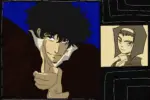The world lost a legend this year. On May 6, Kentaro Miura, author of the widely acclaimed “Berserk” series, passed away due to an aneurysm at the age of 54. His tragic passing came as a huge shock to those who have been following the “Berserk” story for over 30 years. Miura, known for taking infamously long hiatuses between manga chapters, unfortunately never had the opportunity to finish the epic fantasy series that first entered serialization in 1989.
Years before George R. R. Martin was dreaming up visions of dragons and ice zombies, Miura was well on his way to crafting one of the greatest fantasy stories in the history of the genre. Born in Chiba, Japan, Miura began writing manga (Japanese comic books) at the age of 10. He spent the rest of his life creating manga, eventually garnering the admiration of fans all over the world.
Miura first created an early prototype of “Berserk” in 1988. Then, in 1989, “Berserk” entered serialization, attracting new generations of fans with the passage of each decade. The series became known for Miura’s beautifully detailed illustrations that excellently depicted the dark fantasy setting of “Berserk.” Longtime fans of the series require no introduction to the world of “Berserk,” but as is the case with many foreign works, the series has yet to reach household name status in the United States. Despite this, over 50 million copies of the manga have been sold worldwide, making the series one of the best-selling mangas of all time.
To call “Berserk” a fantasy series would be massively underselling the manga’s expansive and extremely violent story. Like “Game of Thrones,” “Berserk” doesn’t shy away from depicting the brutal realities of life in the Middle Ages. Complete with gory, yet masterfully drawn images of medieval warfare and terrifying monsters, “Berserk” thrusts the reader into a fantasy world grounded by very human characters.
For most people, the word “guts” brings to mind two different things. For some, the word conjures up some disturbing images of entrails and other things most people like to avoid picturing. However, “guts” can also imply courage and bravery. The main protagonist of “Berserk” happens to embody both interpretations of the word, literally and figuratively. Standing between 6’3 and 6’8 depending on the source, the protagonist known as Guts is an imposing figure who wields a ridiculously massive sword. Or, as Miura so eloquently puts it: “That thing was too big to be called a sword. Too big, too thick, too heavy, and too rough, it was more like a large hunk of iron.”
Born under a tree full of hanging corpses, the series’s protagonist is found in the aftermath of a battle by a gang of mercenaries. To their shock, they hear the wailing of a baby beneath one of the dead bodies. Yes, you read that correctly, he was found as a baby beneath his mother’s dangling corpse. In a brilliant stroke of onomastics, Miura names his protagonist Guts, a name that perfectly captures the character’s brutal origin.
Seemingly cursed from birth, Guts lives a hard life under an adoptive mercenary father named Gambino, who trains him in the art of warfare. As Guts’ skills grow he is thrust into battle and quickly becomes adept at killing other people, tragically warping his sense of morality and purpose in life.
However, perhaps the most heartbreaking aspect of Guts’ childhood is his relationship with Gambino. After becoming crippled in a fight, Gambino is sidelined from battle and is forced to watch as a young Guts excels as a mercenary. Still a mere child, Guts is more than happy to hand over his earnings to Gambino who can no longer fight himself. Unfortunately, this breeds contempt in Gambino, who begins to resent his reliance on the child and the mockery from his fellow mercenaries.
One night, Guts is assaulted by another mercenary as he’s sleeping. Taken by surprise and completely helpless, Guts is heartbroken to learn that Gambino had sold his body for the night. While the inclusion of such horrific violence may seem gratuitous, it sets the tone for the series and lets the reader know early on that there is nothing off the table when it comes to the cruel world of “Berserk.”
The series touches on a wide breadth of themes throughout its many chapters, one of which is embodied by its main protagonist. If there is any one word to describe Guts, it’s “resilient.” From the tragic miracle of his birth, to the multitude of battles he survives, Guts’ life is one of struggle and pain. The resilience he demonstrates in the series is central to the manga’s focus on the reality of suffering in the world and the need to struggle and persevere.
Another theme the series explores is friendship and the relationships between people. After spending most of his childhood neglected and abused, Guts has a difficult time trusting and establishing relationships with people. It’s not until he comes across a band of mercenaries led by a charismatic leader named Griffith that he learns to lower his guard and make friends.
It’s at this point that the series begins its most well-known story arc known as “The Golden Age Arc,” which has seen multiple adaptations. Due to the narrative structure of “Berserk,” it’s been difficult for animation studios to adapt the series from its starting point. However, there are three movies on Netflix released in 2011 that begin where Guts becomes acquainted with Griffith and his band of mercenaries. This is a suitable place to start for newcomers, as it effectively introduces the protagonist and delves into one of the greatest arcs in storytelling ever written. Hardcore fans of the series will no doubt insist that one should read the manga first, but the movies on Netflix are a perfect starting point for people who aren’t used to reading manga or have difficulty accessing it.
There is also a 25 episode “Berserk” anime that was released in 1997. The anime also adapts the Golden Age Arc, but is more faithful to the manga than the 2011 movies. While the animation is a bit dated by modern standards, most fans of the series consider it to be the best “Berserk” adaptation that’s been released.
The massive scale of “Berserk” has led to much of the series remaining in manga form only. For the past three decades, fans have eagerly awaited the release of each chapter. Initially released on a monthly schedule, in recent years the series became known for its frequent hiatuses, one of which lasted from December 2012 to April 2014.
Unfortunately, with Miura’s passing, the future of the series is up in the air. Recently there have been statements released by Miura’s writing assistants that hint at a possible continuation of the series, but for now, everyone seems to be taking the time to mourn and respect the legacy of one of the greatest mangaka who ever lived.

















